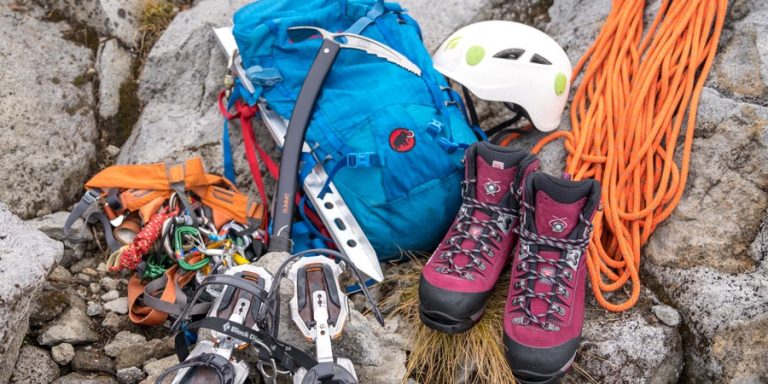Climbing the Spectrum: Examining the Multiple Field of Climbing Experts
The urge to ascend, to conquer gravity and reach new heights, is a fundamental human drive. Climbing, in its myriad forms, taps into this primal instinct, offering challenges that are both physically demanding and mentally engaging. But the world of climbing is far more diverse than simply scaling a wall. From the controlled environments of indoor gyms to the rugged grandeur of remote mountain faces, numerous distinct disciplines cater to different skills, preferences, and levels of adventure. Let’s Trek It invites you to explore the fascinating spectrum of climbing types, each offering a unique pathway to vertical mastery.
I. The Indoor Arena: Forging Foundational Skills
For many aspiring climbers, the journey begins within the walls of a climbing gym. These artificial landscapes provide a safe and accessible introduction to the sport, allowing beginners to learn essential techniques and build strength.
- Bouldering: This dynamic discipline focuses on short, powerful sequences of moves, known as “problems,” climbed on low walls without ropes. Safety is provided by thick crash pads placed beneath the climber. Bouldering is an excellent way to develop strength, technique, and problem-solving skills in a social and engaging environment.
- Top-Roping: Often the first roped climbing experience, top-roping involves a rope that is already anchored at the top of the climbing wall. The climber ties into one end, and a belayer manages the other end, taking up slack and catching any falls. This provides a secure environment to learn basic movement and build endurance on longer routes.
- Lead Climbing (Indoor Sport Climbing): As climbers progress, they often transition to lead climbing. In this more advanced discipline, the climber clips the rope into pre-placed quickdraws (short slings with carabiners) attached to the wall as they ascend. This requires greater rope management skills and introduces the possibility of longer falls, though still safely managed by the belayer.
- Speed Climbing: A highly specialized and competitive discipline, speed climbing focuses on ascending a standardized route as quickly as possible. It demands explosive power, precise movements, and unwavering focus.
II. Venturing Outdoors: Embracing the Natural World
Stepping onto natural rock opens up a vast and varied world of climbing experiences, each with its own unique challenges and rewards.
- Sport Climbing: Similar to indoor lead climbing, sport climbing outdoors involves routes with pre-placed bolts for protection. Climbers clip their rope into these bolts using quickdraws as they ascend. Sport climbing emphasizes physical prowess and technical movement on routes where the safety aspect of placing protection is removed.
- Traditional Climbing (Trad): This adventurous and self-reliant discipline involves the lead climber placing their own protection – removable gear like cams and nuts – into cracks and features in the rock as they climb. This gear is then clipped to the rope to protect against falls. Trad climbing requires a deep understanding of gear placement, route finding, and risk assessment, fostering a strong connection with the rock.
- Multi-Pitch Climbing: Any roped climb that extends beyond the length of a single rope is considered multi-pitch. Climbers ascend one “pitch” at a time, establishing secure anchors at the end of each pitch before belaying their partner up and continuing the ascent. Multi-pitch climbs can range from a few pitches to dozens, often requiring significant time, planning, and teamwork.
- Big Wall Climbing: An extreme and demanding form of multi-pitch climbing, big wall climbing involves ascending very tall cliffs that often take multiple days to complete. Climbers typically employ a combination of free climbing and aid climbing techniques and may sleep on the wall in specialized hanging tents called portalededges.
- Free Soloing: The most extreme and arguably the most dangerous form of climbing, free soloing involves ascending rock faces without any ropes, harnesses, or protection whatsoever. It demands absolute mastery of movement, unwavering mental fortitude, and leaves no margin for error.
- Deep Water Soloing (DWS): A unique and exhilarating style of free soloing, DWS takes place on cliffs that overhang deep water. If a climber falls, they plunge into the water below. This discipline requires careful assessment of water depth and conditions.
III. Specialized Disciplines: Pushing the Boundaries
Beyond the core forms of rock climbing, several specialized disciplines cater to specific environments and skill sets.
- Ice Climbing: This challenging winter discipline involves ascending frozen waterfalls, ice formations, and glaciers using specialized equipment like ice axes and crampons. It requires a unique set of skills and a thorough understanding of ice conditions and safety protocols.
- Alpine Climbing (Mountaineering): Alpine climbing encompasses ascents in mountainous environments, often above the treeline. It typically involves a combination of rock climbing, ice climbing, snow travel, and glacier navigation, demanding a broad range of skills and self-sufficiency.
- Mixed Climbing and Dry Tooling: Mixed climbing blends rock and ice climbing, often requiring the use of ice axes and crampons on both surfaces. Dry tooling is a sub-discipline that focuses on using ice axes on rock, often as a training method or a distinct activity.
- Aid Climbing: In aid climbing, climbers use specialized gear attached to placed protection to make upward progress on routes that are otherwise too difficult to free climb. While less common in recreational climbing, it remains a vital technique for ascending extremely challenging or overhanging terrain.
- Competition Climbing: Beyond speed climbing, competitive climbing includes lead climbing and bouldering on artificial walls under specific rules and judging criteria.
IV. Finding Your Vertical Niche: Exploring Your Climbing Passions
The beauty of climbing lies in its diversity. There’s a style out there to match almost every personality and physical aptitude. Whether you’re drawn to the intricate movements of bouldering, the adventurous spirit of trad climbing, or the serene challenge of a multi-pitch ascent, the best way to discover your passion is to try different types of climbing. Start in a safe and controlled environment, learn from experienced climbers, and always prioritize safety as you explore the incredible vertical world. Let’s Trek It encourages you to find your own path on the wall and enjoy the rewarding journey of climbing!




Hi, this is a comment.
To get started with moderating, editing, and deleting comments, please visit the Comments screen in the dashboard.
Commenter avatars come from Gravatar.